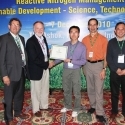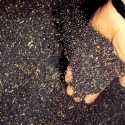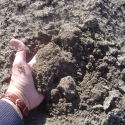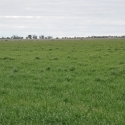11 Feb 2016
Preparing for 2016 - reading the effects of the past seasons
GRDC Ground Cover #120
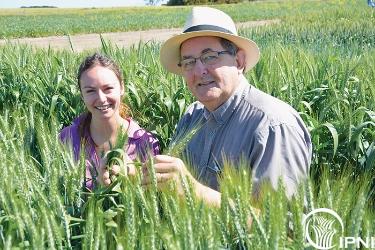 Crop nutrition for 2016
Crop nutrition for 2016
Growers across the southern region are encouraged to make every effort to take accurate soil tests to guide nutrient input levels this year following the dry conditions of 2015.
Well-below-average growing-season rainfall saw substantial areas of crops across the region – particularly in Victoria’s Wimmera and Mallee areas – cut for hay as a salvage operation instead of being taken through to grain.
International Plant Nutrition Institute (IPNI) regional director Dr Rob Norton says it is important that growers soil test for nitrogen (N) and phosphorus (P) in most situations and for potassium (K) where low levels are indicated. Removal of these nutrients will be different compared to other years.
In a 2.5-tonne-per-hectare wheat hay crop that would have yielded 1t/ha grain or a 2.5t/ha canola hay crop that would have yielded 0.6t/ha grain, Dr Norton says there could be two to three times more nitrogen removed and up to 10 times more K removed (Table 1).
“Most of the potassium is present in the stems and leaves of a plant as ionic K, which assists with water transport through the plant,” Dr Norton says. “On some soils, such as sandy, light or acid soils, high-rainfall areas or where there has been a history of hay cutting, this nutrient depletion will be important.”
Critical levels for a Colwell K soil test (0 to 10 centimetres) for wheat are:
- 40 milligrams per kilogram on tenosols and chromosols
- 50mg/kg on kandosols
- about 65mg/kg on brown ferrosols
The most efficient way to do that is to drill muriate of potash (MOP) at seeding or close to seeding rather than top-dressing it.
“If you are drilling MOP in a single chute with the seed then you need to be careful about rates,” he says. “Because MOP is a salt it can cause damage, so it would be more beneficial to have a twin-chute seeder. If there is a need for more K later in the season, you may see it as greener strips in the new crop. Those strips will look better and greener than the area between them. If there is still deficiency, check using tissue tests and then come in and top-dress.”
Dr Norton says soil tests will be critical not just to monitor K levels but also for P and N following widespread heavy rain in early November.
“A replacement strategy for P is appropriate for most growers, so that rates for 2016 can be reduced, but in most cases some P at seeding is beneficial to early crop growth.
“In terms of N, summer rainfall will stimulate N mineralisation, which will mean that starting levels of N at sowing could be anything,” he says.
“A lot of growers may not have put much nitrogen on in 2015 because it was so dry. The objective for growers over summer should be to make sure they are preserving nitrogen by having weed-free summer fallows.”
- See more at: http://www.grdc.com.au/GC120-NutrientLevels#sthash.Gz4IKHbE.dpuf

